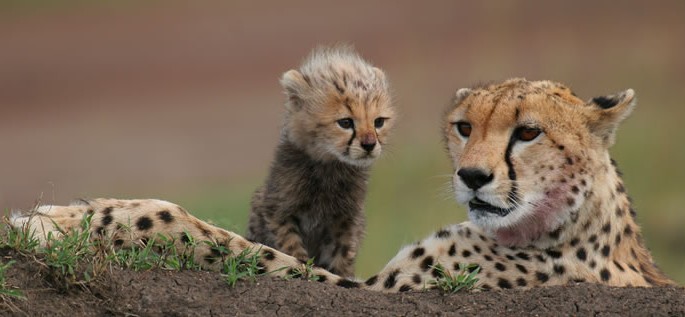Gikuyu

Gikuyu (Kikuyu, Agĩkũyũ )belongs to the Bantu branch of the Niger-Congo language family. It is a growing language spoken as a first language by 6.6 million people in Kenya in an area between Nairobi and Mount Kenya (Ethnologue). In recent years, the language has spread into other parts of southern Kenya, so that today Gikuyu speakers constitute one of the largest linguistic groups of Kenya, with the exception of English.
Although Gikuyu does not have an official status in Kenya where (the official languages are English and Swahili), it is, nevertheless, plays an important role being spoken as a first language language by the Gikuyu people and one that is also being learned as a second or third language by non-Gikuyu. This is particularly true in urban areas such as Nairobi, East Africa’s largest city and in the surrounding areas of central Kenya. Gikuyu is taught in primary schools and used in news media, radio programs, TV, videos, and cinema.
Dialects
According to Ethnologue, there are 5 major dialects of Gikuyu:
- Southern Gikuyu
- Ndia
- Gichugu
- Mathira
- Northern Gikuyu
Structure
The sound system of Gikuyu has many features in common with other Bantu languages. It is particularly distinguished by prenasalized consonant phonemes and tones.
Vowels
Gikuyu has seven vowel phonemes, i.e., sounds that make a difference in word meaning. Vowels can be long or short. Their length differentiates the meaning of words. In writing, long vowels are represented by double letters, e.g., aa represents long /a/. Vowels can also be nasalized. Nasalization is represented by a tilde. In the table below, their orthographic representations are given in parentheses in red.
| xxxx |
Front
|
Central
|
Back
|
|---|---|---|---|
| Close |
i (i)
|
u (u)
|
|
| Close-mid |
e (ĩ)
|
o (ũ)
|
|
| Mid |
ε (e)
|
ɔ (o)
|
|
| Open |
a (a)
|
- /ε/ = e in bet
- /ɔ/ = o in bog
Consonants
Gikuyu has eighteen consonant phonemes. A distinguishing feature is the presence of prenasalized consonant phonemes, i.e., sequences of nasal plus another consonant that behave like a single sound unit. In the table below, the orthographic representations of the phonemes are given in red.
|
Bilabial
|
Interdental |
Alveodental
|
Postalveolar
|
Palatal |
Velar
|
Glottal
|
||
|---|---|---|---|---|---|---|---|---|
| Stops | voiceless |
t (t)
|
xx
|
k (k)
|
||||
| voiced prenasalized |
ᵐb (mb)
|
ⁿd (nd)
|
xx
|
ᵑg (ng)
|
||||
| Fricatives | voiceless |
ʃx(c)
|
x
|
h (h)
|
||||
| voiced |
β (b)
|
ð (th)
|
ɣ (g)
|
|||||
| Affricates | voiced prenasalized |
ⁿdʒ (nj)
|
||||||
|
Nasals
|
m (m)
|
n (n)
|
ɲ (ny)
|
ŋ (ng’)
|
||||
| Flap/trill |
r (r)
|
xxx | ||||||
| Semivowelsxx |
w (w)
|
xxx |
j (y)
|
|||||
- /ᵐb, ⁿd, ᵑg, ⁿdʒ/ are prenasalized consonants consisting of a nasal plus a stop or affricate which are produced together as a single phonological unit
- /ɣ/ has no equivalent in English
- /β/ has no equivalent in English
- /ð/ = th in those
- /ʃ/ = sh in shop
- /tʃ/ = ch in chap
- /dʒ/ = j in jeans
- /ɲ/ = first n in canyon
- /ŋ/ = ng in song
- /j/ = y in yet
Tones
Gikuyu has two tones: high and low. High tone is represented by an acute accent, e.g., á, while low tone is represented by a grave accent, e.g., à.
Gikuyu shares many grammatical features with other Bantu languages, namely a high degree of agglutination, i.e., the adding of affixes to a base form in nominal and verbal forms.
Nouns
- Gikuyu nouns are divided into ten noun classes. Although the content of some noun classes is semantically transparent, there is some unpredictability as to whether a noun with a particular meaning belongs to a certain class. For examples, Class 1 nouns denote to human beings,
- Each noun class is associated with a particular prefix, one in the singular, and another in the plural. For Class 1 nouns denoting human beings the following prefixes are used: mũndũ ‘person’, kamũndũ ‘small person’, andũ ‘many people’. There are also derogatory prefixes.
- Nouns ordinarily carry an inflectional marking that simultaneously expresses gender and number, e.g., in mũ-ndũ mũ-kũrũ ‘old person’ (singular) and andũ a-kũrũ (plural), both noun and modifier carry a gender and number marker.
Verbs
Gikuyu verbs consist of a root that may be extended by adding various suffixes. Final modal suffixes mark the indicative and subjunctive.
One of the suffixes is a subject marker, referring to and agreeing with the subject of the clause.
- One of the suffixes is a subject marker, referring to and agreeing with the subject of the clause. It may be immediately followed by the tense/aspect marker, e.g., a-gwat-ire ‘he held [today]’ which consists of the verb root -gwat– ‘hold’ + –ire, a suffix denoting an ‘action that has taken place on the day of speaking’.
- The tense/aspect marker can also be a prefix, e.g., a-á-gwata where the prefix -á- denotes ‘an action taking place immediately before the time of speaking’.
- Habituality is marked by the tense suffix –ga-, e.g., a-ra-gwata-ga ‘he/she kept holding’ where –ra– denotes ‘action that took place no earlier than the day before the day of speaking’ and –ga denotes ‘habitual’.
- There is a fine distinction between degrees of pastness, e.g., a-gwat-ire ‘She/he held [recent past]’ and a-ra-gwat-ire ‘He/she held [remoter] past’.
- Gikuyu allows concatenation of tense/aspect markers, e.g., ĩ-ngĩ-ka-na-endia ‘if I should ever sell [it]’ where –ngĩ– is ‘hypothetical’, –ka– is ‘future’, and –na– is ‘indeterminate time’.
Word order
The normal word order in Gikuyu is Subject-Verb-Object. However, topicalization is possible, so that the emphasized constituent precedes all other constituents in a sentence.
Gikuyu has borrowed words from Swahili that were, in turn, borrowed by Swahili from colonial languages, e.g., bendera ‘flag’ from Swahili bendera, borrowed from Portuguese bandeira; metha from Swahili meza, borrowed from Portuguese mesa. Gikuyu has also borrowed words from English, such as njanji ‘judge’. Gikuyu shares a significant percent of its vocabulary with other languages spoken in Kenya, such as Embu, Chuka, Kamba, and Meru.
Below are a few Gikuyu words and phrases.
| Good morning | We mwega rũciinĩ/kĩroko |
| Good afternoon | We mwega umũthĩ |
| Good evening | We mwega hwaĩinĩ |
| OK, alright | nĩwega |
| Thank you | Nĩ ngatho |
| How are you? | Wĩ mwega? |
| No | Aacha |
| Father | Baba |
| Mother | Maitũ/mami |
Below are Gikuyu numerals 1-10.
|
1
|
2
|
3
|
4
|
5
|
6
|
7
|
8
|
9
|
10
|
|---|---|---|---|---|---|---|---|---|---|
|
ĩmwe
|
igĩrĩ
|
ithatu
|
inya
|
ithano
|
ithathatu
|
mungwanja
|
inyanya
|
kenda
|
ikumi
|
Writing
In addition to a rich oral literature, Gikuyu has an older and more extensive written literature than any other East African language, with the exception of Swahili. A good deal of the Gikuyu literature is political, but there is also fiction by authors such as Ngũgĩ wa Thiong’o.Today, Gikuyu is written in the African reference alphabet, first proposed by a UNESCO-organized conference in 1978. It is a version of the Latin alphabet adapted to represent Gikuyu sounds. Nasal vowels are marked with a tilde. Although Gikuyu is a tonal language, tones are not represented in its orthography which can lead to confusions because two words with different meanings can be spelled in the same way.
The current Gikuyu alphabet is given below.
|
A a
|
B b
|
C c
|
Nd nd
|
E e
|
G g
|
Ng ng
|
Ng’ ng’
|
H h
|
I i
|
Ĩ ĩ
|
Nj nj
|
|
K k
|
M m
|
N n
|
Ny ny
|
O o
|
Ũ ũ
|
R r
|
T t
|
Th th
|
U u
|
W w
|
Y y
|
Below are the first two sentences from John 1:1 in Gikuyu.
| Kĩambĩrĩianĩ Ũhoro aarĩ o kuo, na aatũire harĩ Ngai, nake aarĩ o Ngai. |
| In the beginning was the Word, and the Word was with God, and the Word was God. |







